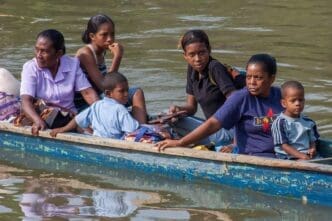A challenging journey through the Darién jungle ended in disappointment for many migrants aiming to reach the United States. Recent developments have forced them to retreat back to South America, retracing their steps through Panama toward Colombia.
Following a grueling trek through the notorious Darién Gap, migrants primarily from Venezuela and Colombia are now returning to their home countries. Their initial journey was in pursuit of asylum in the United States, but the recent political climate has dashed their hopes.
The change in U.S. administration has notably impacted migration policies. The suspension of the CBP One application, a tool that previously enabled migrants to request asylum, compels many to return. Reports indicate that between 50 and 75 migrants move southwards each day, opting for an eight-hour boat journey towards another Panamanian port before heading to Colombia.
A tragic incident highlighted the risks involved in this reverse migration route. A boat ignored severe weather warnings and capsized. Among the 21 passengers, a young Venezuelan girl tragically lost her life, accentuating the dangers migrants face even when moving south.
Migrants have faced significant financial strains throughout their ordeal. Some had invested their last savings, amounting to thousands of dollars, to chase the American dream. With limited resources left, many now find themselves paying $200 to $260 per person for their return journey through Panama.
Individuals like Karla Castillo illustrate the complex emotions surrounding these journeys. After years in Chile and a challenging voyage northward, she now finds herself heading back. Despite the emotional toll, she remains determined to reunite with her family in Venezuela, driven by personal circumstances like her daughter’s health.
Estevani Llerena, another returning migrant, expressed mixed feelings. Although her quest to reach the U.S. was unsuccessful, she feels a pull towards safety and familiarity at home. This sentiment resonates with others who have experienced both the harshness of the journey and the anxiety of uncertainty.
Despite the physical and emotional toll of their travels, many migrants express relief at the prospect of returning home. The journey, initially filled with ambition and hope, became laden with trials and uncertain outcomes. Yet, the return home, despite being under challenging circumstances, offers a sense of closure and safety.
The journey for these migrants encapsulates the broader struggles faced by countless others in similar positions. While the road to the north was filled with obstacles, the journey back home, however difficult, offers hope for reconnection and a fresh start.








